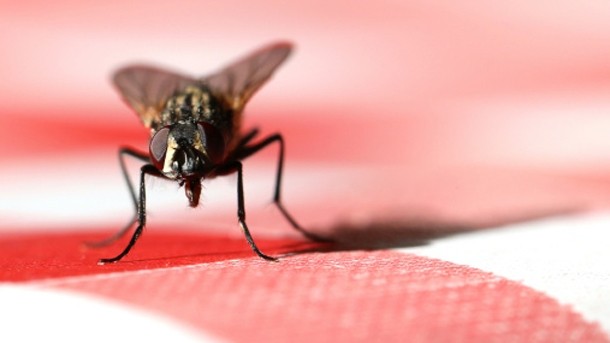ASK THE EXPERTS
Five ways to keep flies out of your hospitality business this summer

Summer is a key trading period for all businesses in the hospitality industry, from fully booked hotel rooms to packed-out beer gardens and outdoor dining areas. However, the rise in temperatures can also lead to the arrival of some unwanted guests which cause annoyance to customers and hygiene issues for staff: flies.
Types of flies and how to deal with them:
House flies
These are generally a half/third inch long and greyish in colour with four dark, blackish stripes behind the head – they land very regularly which is the opposite to their relation the Lesser House Fly which tend to hang around light fittings in the middle of a room and only land at night.
Houseflies are drawn to damp, unsanitary areas. Bins outside restaurants, for example, are likely breeding grounds.
These flies feed on almost any man-made or naturally occurring waste, so every business that has waste is at risk.
Its life cycle requires two to three weeks from egg deposition to adult emergence during warmer periods. They live only two to three days without food but can survive up to 50 days where food is available.
Females deposit an average of 400 to 600 eggs each so they can develop large populations rapidly.
Consider this issue in a restaurant where managing food waste is a constant challenge, and you could well be looking at serious problems that could affect your hygiene standards, and, in worse cases, see you shut down.
Fruit flies
These can be a problem year round, but are especially common during late summer/autumn because they are attracted to ripened or fermenting fruits and vegetables, making them a real danger to restaurants and bars.
Items such as tomatoes, melons, grapes and other perishable items are often the cause of an indoor infestation but these flies are also attracted to rotting bananas, potatoes, onions and other unrefrigerated produce.
Such is their addiction to sweet, sticky products, fruit flies are very common anywhere where food is allowed to rot and ferment. The adult fruit fly is around 1/8 inch long and usually has red eyes. The front area of the body is tan and the rear area is black.
Fruit flies lay their eggs near the surface of fermenting foods or other moist, organic materials. Upon emerging, the tiny larvae continue to feed near the surface of the fermenting mass.
Given the opportunity, they will lay about 500 eggs and the entire lifecycle from egg to adult can be completed in about a week. Again, it is something that can quickly get out of hand if the issue is not identified and tackled right away.
While both fruit and house flies are nuisance pests, the real danger is the potential they have to contaminate food with bacteria and other disease-producing organisms, which could lead to illness among your customers.
How to prevent flies from causing a nuisance:
1. Manage the issue
The key to this is defending your premises through sanitation. Food and materials where flies have laid their eggs must be remove or destroyed. Killing adult flies will reduce infestation, but elimination of breeding areas is necessary for good fly control management. Bins and surrounding areas should have tight-fitting lids and be cleaned regularly, and proper drainage should be fitted to get keep premises damp free.
2. Install a professional fly unit
You need to be able to keep on top of these pests and there are a number of professional fly units on the market to help you do just that. They range from quality sticky traps to electric grid fly-killing units. All help.
3. Install screens
Installing made-to-measure screens over doors and windows will ensure light and air can still flow through your buildings while keeping out unwanted visitors.
4. Keep it clean
In areas where food and drink are prepared or served it is important that surfaces are kept clean and tidy and bottles of alcohol and containers storing food are sealed properly at the end of each shift. Fruit flies are particularly attracted to sweet drinks so it is good practice to clean beer mats daily and ensure ice wells, sinks and surfaces are thoroughly dried at the end of each day.
5. Look at it long-term
All this is well and good, and some may say common sense, but businesses cannot expect to eliminate flies completely unless they adopt a long-term approach to the issue. As soon as standards slip, flies will comeback, so make sure your staff are well educated in ensuring flies choose somewhere other than your property to spend their summer.














